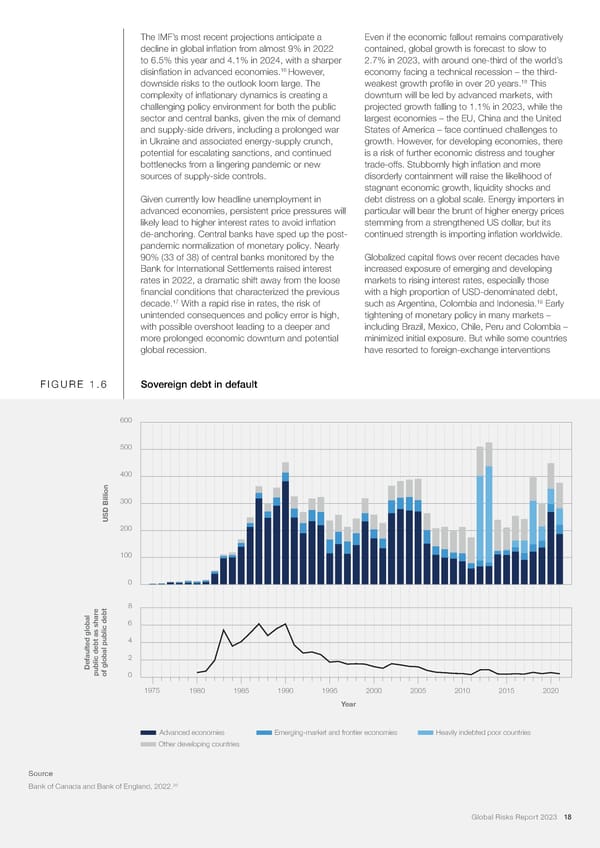The IMF’s most recent projections anticipate a Even if the economic fallout remains comparatively decline in global in昀氀ation from almost 9% in 2022 contained, global growth is forecast to slow to to 6.5% this year and 4.1% in 2024, with a sharper 2.7% in 2023, with around one-third of the world’s 16 disin昀氀ation in advanced economies. However, economy facing a technical recession – the third- 18 downside risks to the outlook loom large. The weakest growth pro昀椀le in over 20 years. This complexity of in昀氀ationary dynamics is creating a downturn will be led by advanced markets, with challenging policy environment for both the public projected growth falling to 1.1% in 2023, while the sector and central banks, given the mix of demand largest economies – the EU, China and the United and supply-side drivers, including a prolonged war States of America – face continued challenges to in Ukraine and associated energy-supply crunch, growth. However, for developing economies, there potential for escalating sanctions, and continued is a risk of further economic distress and tougher bottlenecks from a lingering pandemic or new trade-offs. Stubbornly high in昀氀ation and more sources of supply-side controls. disorderly containment will raise the likelihood of stagnant economic growth, liquidity shocks and Given currently low headline unemployment in debt distress on a global scale. Energy importers in advanced economies, persistent price pressures will particular will bear the brunt of higher energy prices likely lead to higher interest rates to avoid in昀氀ation stemming from a strengthened US dollar, but its de-anchoring. Central banks have sped up the post- continued strength is importing in昀氀ation worldwide. pandemic normalization of monetary policy. Nearly 90% (33 of 38) of central banks monitored by the Globalized capital 昀氀ows over recent decades have Bank for International Settlements raised interest increased exposure of emerging and developing rates in 2022, a dramatic shift away from the loose markets to rising interest rates, especially those 昀椀nancial conditions that characterized the previous with a high proportion of USD-denominated debt, 17 19 decade. With a rapid rise in rates, the risk of such as Argentina, Colombia and Indonesia. Early unintended consequences and policy error is high, tightening of monetary policy in many markets – with possible overshoot leading to a deeper and including Brazil, Mexico, Chile, Peru and Colombia – more prolonged economic downturn and potential minimized initial exposure. But while some countries global recession. have resorted to foreign-exchange interventions FIGURE 1.6 Sovereign debt in default 600 500 400 300 USD Billion 200 100 0 e 8 6 4 2 Defaulted globalpublic debt as shar of global public debt0 1975 1980 1985 1990 1995 2000 2005 2010 2015 2020 Year Advanced economies Emerging-market and frontier economies Heavily indebted poor countries Other developing countries Source Bank of Canada and Bank of England, 2022.20 Global Risks Report 2023 18
 2023 | Global Risks Report Page 17 Page 19
2023 | Global Risks Report Page 17 Page 19